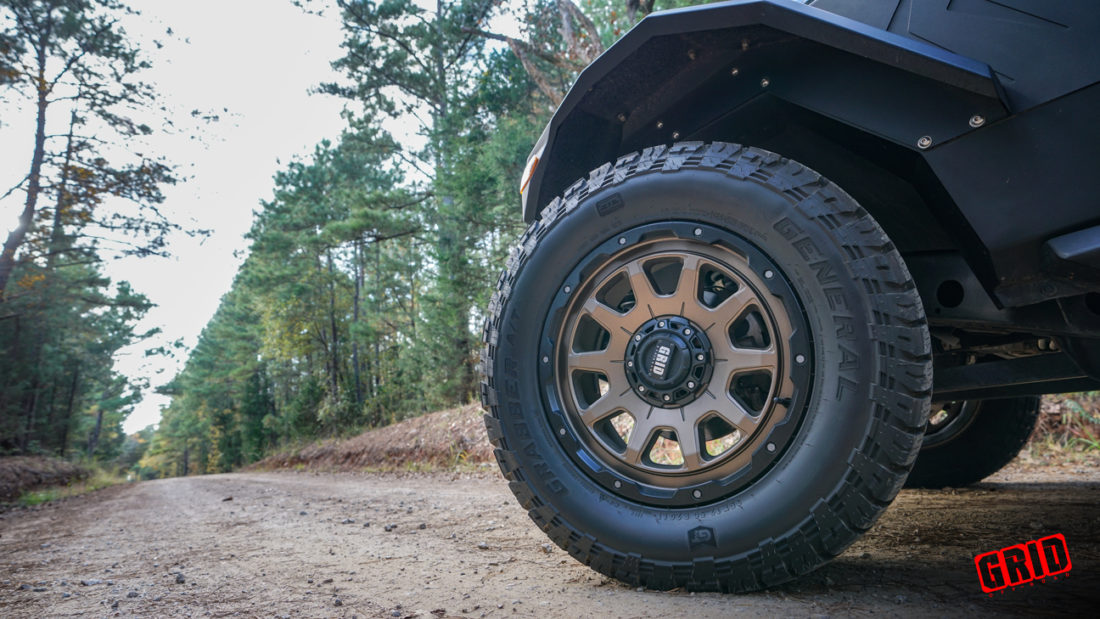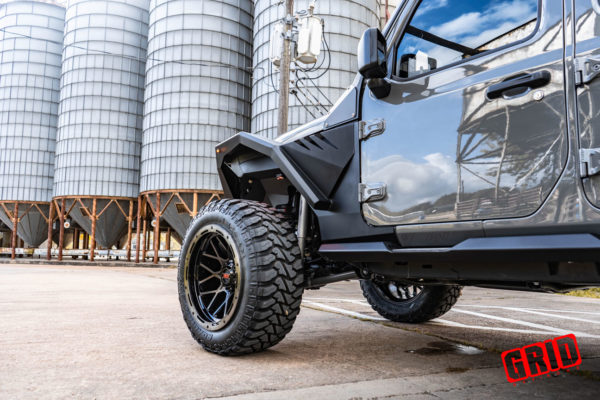What Is Wheel Offset?
If you’re in the market for a fresh set of wheels, you’ve most likely come across the term “offset.” It’s a standard term in the aftermarket wheel industry and it’s an important thing to know before you spend money on any set of wheels. The right offset makes sure your new wheel style has enough clearance on your rig so that nothing rubs up against the suspension, rig body or brakes (even the bumpers, fenders and mud flaps). Plus offset is also important for driving safety, since getting the wrong offset can actually interfere with the rig’s braking and reduce its stability out on the road.
 What Is Wheel Offset & Backspacing
What Is Wheel Offset & Backspacing
The term “offset” refers to how your rig’s wheels and tires are mounted on and how they sit inside the wheel wells. There are quite a few offsets when it comes to rigs so here’s a breakdown of what they mean:
Negative offset: This offset is used when the hub mounting surface of the rig is behind the wheel’s centerline. Usually, wheels considered “deep” usually have a negative offset.
Zero offset: A rig has this offset when its hub mounting surface is perfectly in line with the centerline of the wheel.
Positive offset: This offset is opposite of the negative one and has the hub mounting surface right in front of the centerline of the wheel (facing the road).
What Is Backspacing?
Another term you might come across when searching for new off-road wheels is backspacing. This simply means the distance your wheels and tires require to accommodate both wheel width and offset. It’s important when choosing a new off-road wheel that is wider than the OEM one that originally came on the rig when you buy it.
Getting both backspacing and offset measurements correct equals a wheel and tire package that offers the best looks, performance and handling. Both are necessary when ordering new off-road wheels (from any brand). Getting them incorrect can mean big problems for you, your wallet and your rig.
Problems With Too Much Positive Offset
Wondering what problems will occur with too much positive offset? First, you run the risk of tire failure and it’s it can interfere with brake parts, which is never good when your’e driving. Plus, you face some expensive damage to the rig’s inner edge of the wheel and tire rubbing against the suspension or body. All of this can translate too poor handling and making your rig unstable.
Problems With Too Much Negative Offset
When you have too much negative offset, you’ll have poor handling, increased steering wheel kickback and place additional stress on your rig’s suspension.
What To Remember About Wheel Offsets
Now that you know what offset and backspacing means when it comes to purchasing new wheel sets, here are a few things to remember:
- These measurements can be confusing and tricky. The wrong offset can really throw off stability and handling, even though the wheel and tire have enough clearance. When you’re getting new wheels, y ou don’t want to be off with the new offset more than about 5 millimeters from your old set.
- If your new wheels are wider than your OEM ones, you’ll want to factor in backspacing AND offset for the perfect fit.
- You’ll want to make sure that the new wheel and tire package you get stays within the recommended load capacity to provide you with better handling.
- When in doubt, go to a wheel professional. They’ll be able to help you figure out the right offset and backspacing your ride needs. GRID Off-Road uses a network of dealers across the globe. Email us at Sales@grid-offroad.com to find one near you!
GRID Off-Road offers a variety of wheels for your truck, Jeep or SUV. We do disclose all offsets and backspacing on the site to make it easier to see what will fit your rig. Right now, you can easily purchase our GD Cast wheels directly from us! Or if you’re looking for some forged GF wheels, hit us up so that we can located a dealer near you. Make sure to check out our off-road wheel styles because we definitely have something for your rig!




 What Is Wheel Offset & Backspacing
What Is Wheel Offset & Backspacing

No Comments